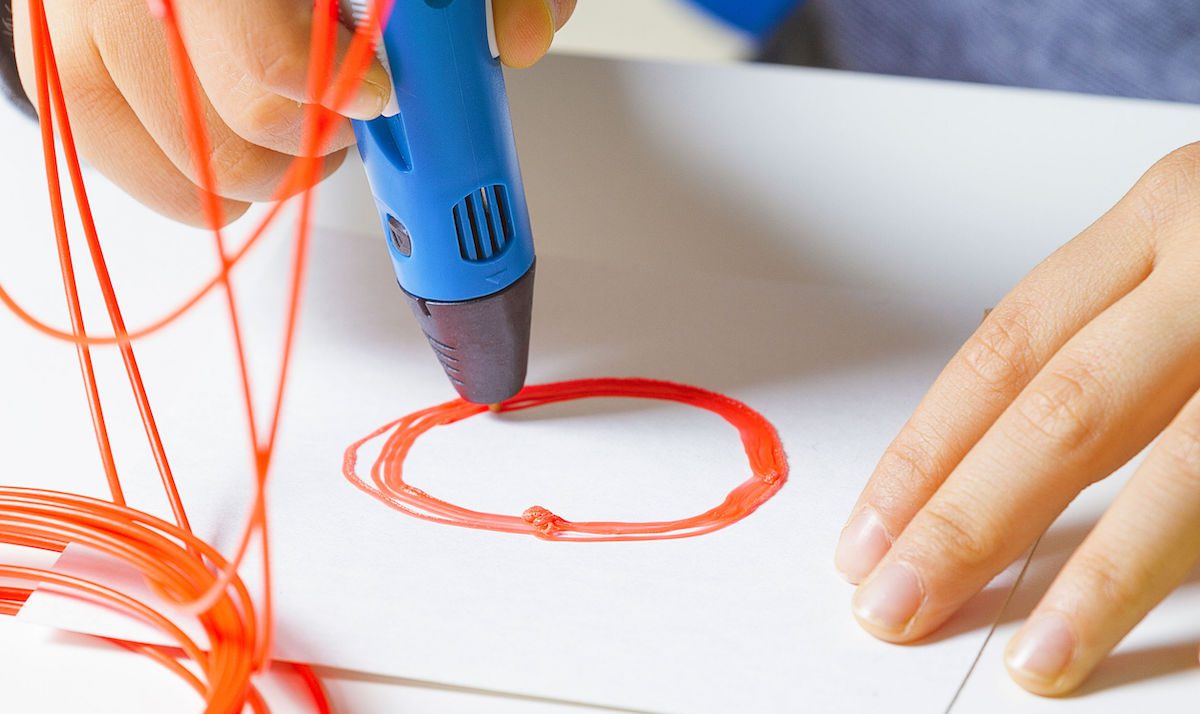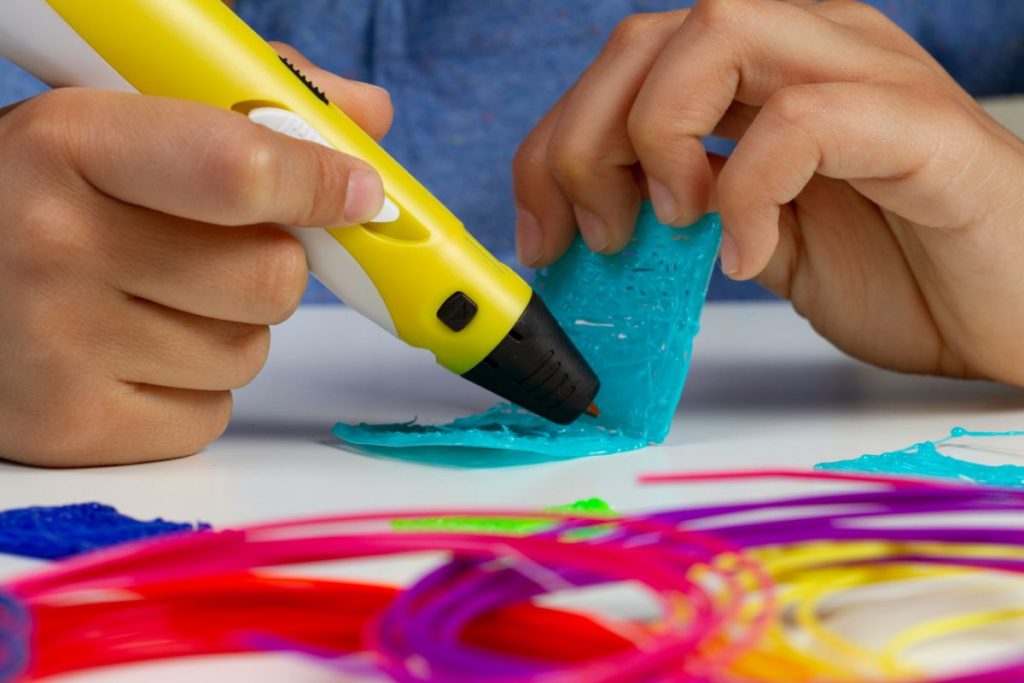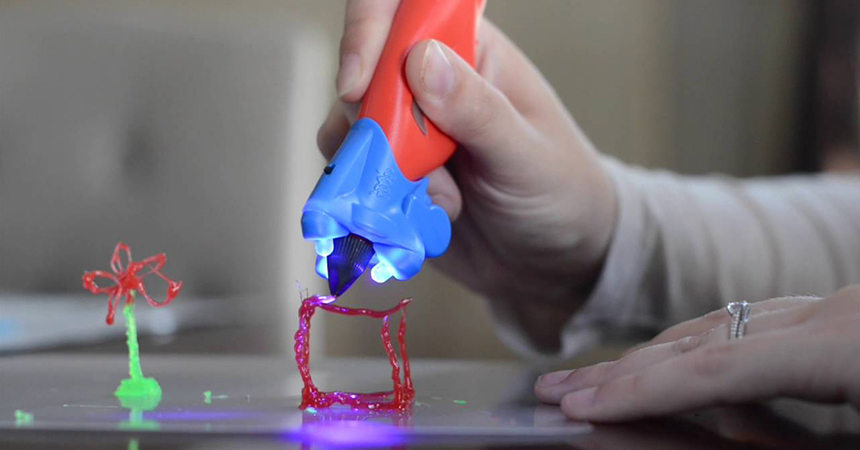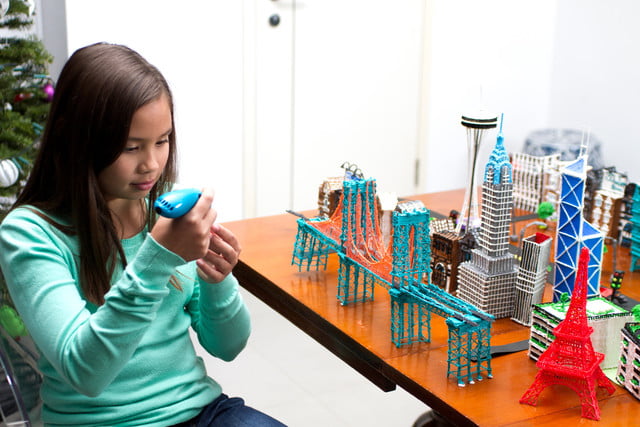
A Guide to 3D Printing Pens: Add a New Dimension to Your Art
If you have a soft spot for arts and crafts and DIY projects, you know that nothing compares to the feeling of creating something with your own two hands. Painting, sculpting, mending and other similar activities are fantastic ways to de-stress and relax. Not only because they keep our hands and minds busy and entertained, but also because they give us a sense of accomplishment and pride afterwards.
Among the many tools available to the avid DIY-er and craftsperson of today is a relatively new invention that can transform how you design and create. A gadget that adds a new dimension to the creative process quite in the literal sense: the printing 3D pen.
Contents
What Is a 3D Pen?
This innovative handheld device resembles a regular pen or pencil, but it’s far from ordinary. As the name suggests, this tool is designed to help you bring your ideas to life in three dimensions. You can use it to create three-dimensional objects by drawing in the air or on a surface while maintaining high precision and control.
But do 3D Pens need ink? No, instead of using ink or graphite, these devices use a variety of filaments such as PLA, ABS, or nylon. The pen heats the filament and extrudes melted plastic, allowing you to layer your way up to a solid structure.
Who Can Use 3D Pens?

Whether you’re a designer, artist, engineer, or hobbyist, you can buy a printing 3D pen to streamline your creative pursuits. This tool will give you more creative freedom than traditional drawing and painting tools. You can use it to create intricate and complex designs in three dimensions or add depth and detail to your art, something that would be impossible or hard to achieve with a regular pen on a piece of flat canvas or paper.
One of the best things about these pens is that you can get to crafting right away without learning complex software or investing in expensive hardware. This means that everyone, including children aged 6 and up can enjoy creating in 3D. Of course, before buying one for your little one, you’ll need to double-check whether the pen in question is suitable for their age.
What Are 3D Pens Used for?
These tools are incredibly versatile and can tackle a wide variety of tasks. One of the most common uses for printing pens is in art and design, where artists use them to create detailed sculptures and models. In addition, these devices are often employed in engineering and manufacturing, where engineers use them to create functional prototypes and custom parts.
For the avid DIY enthusiast, this nifty little gadget opens a whole new world of creative opportunities. From jewellery and card making to repairing small objects around the home, the options are virtually endless.
How Much Does a 3D Pen Cost?
The cost will greatly depend on the brand, features, and quality of the pen. Generally speaking, you can find basic models for around $50, while more advanced models can set you back $200 and up.
It doesn’t matter if you’re going for a budget-friendly option to test the waters or a featured-pack device to bring your hobby to a new level, you’d still be getting superb value for your money. After all, it sure is nice to turn your creative visions into reality with a few waves of a pen.
What to Look for in a 3D Printing Pen?

When looking for 3D pens for sale online or in stores, you’ll come across various models and features. Knowing which one to get can make all the difference in your arts and crafts projects, so keep reading.
First things first, the design of the pen. Look for a user-friendly, preferably ergonomic body that feels nice in your hand to allow for easy control and comfort even when used for extended periods of time.
Then, consider the filament type you’ll need for your specific projects. If you’re planning to create artistic or decorative objects, a PLA pen can give you more precision and control, as well as smoother printouts. This type of filament is easier to handle than ABS and produces little to no odour during printing.
Be that as it may, when it comes to durability, ABS is considered far superior, making it a more suitable option for objects that need to withstand high temperatures or heavy use.
The temperature range, speed, and flow controls of the pen are also important factors to consider as they can affect the quality of your prints, as well as your ability to control the device. To get the utmost functionality of your new tool, look for a device with adjustable settings so you can fine-tune your prints and achieve the desired level of detail and precision.
Closing Thoughts

All things considered, it’s safe to say that these devices can provide an enjoyable creative experience without draining your budget. And with just a little bit of practice and experimentation, you can master the art of 3D printing and let your imagination run wild.
Oh, and one last thing before you go, remember to always take appropriate safety precautions when using your pen, especially when working with materials that can release potentially harmful fumes. In addition, since things can get pretty hot when working with melted plastics, consider wearing safety gloves or an apron for added protection.
With that being said, it’s time to hit your local store and discover the magic world of 3D printing with pens. Happy crafting!

